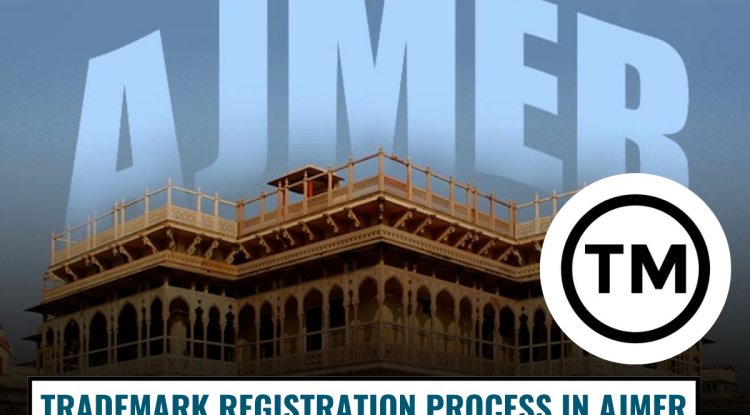Design Piracy in India: Assessing the Effectiveness of Legal Remedies for Small and Medium Enterprises (SMEs)
Design piracy poses a significant threat to Small and Medium Enterprises (SMEs) in India, as innovative designs often become the target of imitation by larger corporations or unscrupulous competitors. While the Designs Act, 2000 offers legal recourse, the effectiveness of these remedies for SMEs is a topic of concern. This blog delves into the challenges faced by SMEs in combatting design piracy and assesses the available legal remedies in India. It explores whether these remedies provide adequate protection or if systemic reforms are needed to enhance enforcement and accessibility for smaller enterprises.

Introduction
In the fiercely competitive business landscape, innovative design has become a crucial asset for Small and Medium Enterprises (SMEs). From fashion products to furniture and consumer goods, unique designs help SMEs differentiate themselves and attract a loyal customer base. However, design piracy—a practice where original designs are copied or imitated without authorization—has emerged as a major threat to these businesses. While large corporations may have the resources to fight design infringement, SMEs often face significant hurdles in protecting their designs through legal means.
This blog examines how effective the legal remedies under the Indian Designs Act, 2000 are for SMEs and whether these businesses are adequately protected from design piracy.
Understanding Design Piracy in India
Design piracy occurs when the aesthetic features of a product—such as its shape, configuration, or pattern—are copied by another party without authorization. In India, design piracy is particularly rampant in industries such as apparel, jewelry, home decor, and consumer electronics, where visually appealing designs are integral to the brand identity.
For SMEs, design piracy can result in significant losses, not only in terms of revenue but also in brand reputation. Consumers often cannot differentiate between the original product and the pirated one, leading to confusion and diluted brand value. Moreover, the lower-priced pirated versions often flood the market, leaving SMEs unable to compete on price alone.
The Legal Framework: The Designs Act, 2000
India’s primary legal tool for combatting design piracy is the Designs Act, 2000, which provides protection for original designs that are novel and unique. Once a design is registered, the creator holds exclusive rights to its use for a period of 10 years, extendable by another 5 years.
Under this Act, a registered design owner has the right to take legal action against any party that copies or replicates their design. The remedies include injunctive relief (to prevent further infringement), damages, and in some cases, seizure of infringing goods. The Act also provides for criminal penalties in cases of deliberate infringement.
Legal Remedies for SMEs: Effectiveness and Limitations
While the Designs Act, 2000 offers legal avenues for protection, many SMEs face difficulties in accessing and effectively utilizing these remedies. Below is an assessment of the key remedies available to SMEs and their effectiveness in combatting design piracy:
A. Injunctions
An injunction is often the most immediate remedy sought by SMEs facing design piracy. It helps prevent the infringer from continuing to use the copied design, thus protecting the SME’s market share and brand reputation. However, obtaining an injunction in India can be a lengthy process, often requiring preliminary hearings and evidence collection.
For SMEs with limited legal resources, pursuing an injunction can be cost-prohibitive. Additionally, the slow pace of judicial proceedings in India may mean that by the time an injunction is granted, the damage may already have been done.
B. Damages
SMEs can also claim monetary damages for losses incurred due to design piracy. However, in practice, proving the extent of the financial loss can be a complex process. SMEs often lack the financial resources to conduct the thorough market analysis required to establish the quantum of damages. Even when damages are awarded, the amount may not fully compensate for the brand dilution or loss of market position.
C. Criminal Penalties
In cases of deliberate design piracy, criminal penalties such as fines and imprisonment may be imposed under the Designs Act. However, criminal enforcement is not commonly pursued in design infringement cases, especially by SMEs, as these cases require significant time and resources, which most smaller businesses lack.
D. Enforcement Challenges
One of the biggest challenges SMEs face is the enforcement of design rights. Even with a favourable judgment, enforcing design protection in India is often an uphill battle. Many SMEs are unable to follow through with enforcement actions due to limited financial capacity, and infringers—often well-resourced competitors—continue to profit from pirated designs.
Case Study: Design Piracy and the Struggles of SMEs
One notable case involves Tata Steel vs. Eureka Forbes, where Tata Steel accused Eureka Forbes of copying the design of their water filter. While this was a high-profile case involving large corporations, it sheds light on how design piracy operates in India. For an SME, the financial and legal muscle required to pursue such a case would be enormous, making it harder for smaller companies to protect their rights.
In the SME sector, a local furniture startup in Jaipur faced design infringement when a larger corporation copied its unique chair designs. The startup registered its designs but lacked the resources to fight a protracted legal battle. Eventually, the pirated designs flooded the market, affecting the SME’s sales and brand positioning.
Practical Solutions and Recommendations for SMEs
To mitigate the risk of design piracy, SMEs can adopt several practical strategies:
A. Early Design Registration
SMEs must prioritize early registration of their designs to secure legal protection. The registration process can take 6 to 12 months, so it’s important to file the application as soon as the design is finalized. Additionally, SMEs can consider registering their designs in multiple jurisdictions to prevent international piracy.
B. Seeking Pro Bono Legal Aid
Many IP law firms and organizations offer pro bono legal aid to SMEs in cases of design infringement. This can help level the playing field, enabling smaller companies to fight piracy without incurring massive legal expenses.
C. Leveraging Industry Associations
SMEs should join industry associations that focus on protecting members’ IP rights. These associations can offer resources, collective bargaining power, and a stronger voice in advocating for the protection of SMEs’ designs.
D. Alternative Dispute Resolution (ADR)
SMEs can explore ADR mechanisms like arbitration or mediation to resolve disputes more quickly and cost-effectively. ADR can provide a faster resolution than traditional court proceedings, allowing SMEs to focus on their core business.
The Need for Systemic Reforms
To better protect SMEs, there is a need for systemic reforms in India’s IP enforcement framework. Key reforms could include:
- Simplified Procedures for SMEs: Introducing streamlined procedures specifically tailored for SMEs could help them access legal remedies faster and more affordably.
- Specialized Courts: Establishing specialized IP courts or tribunals would ensure that IP cases, including design piracy, are resolved efficiently and without delay.
- Government Support Programs: The Indian government could introduce subsidies or grants to help SMEs cover the costs of registering designs and fighting infringement cases.
Conclusion
Design piracy remains a significant threat to SMEs in India, with legal remedies under the Designs Act, 2000 offering both opportunities and challenges. While the law provides avenues for protection, the practical hurdles of cost, time, and enforcement often limit the ability of SMEs to fully defend their designs. As India’s economy continues to grow and more SMEs enter the market, it is essential to reform the existing legal framework and provide SMEs with the necessary tools to protect their intellectual property effectively.
SMEs that invest in early registration, leverage pro bono legal support, and explore ADR mechanisms can better safeguard their innovative designs. However, long-term success in combatting design piracy will require a collective effort, including stronger government policies, industry collaboration, and specialized legal reforms that address the unique challenges faced by smaller enterprises.












